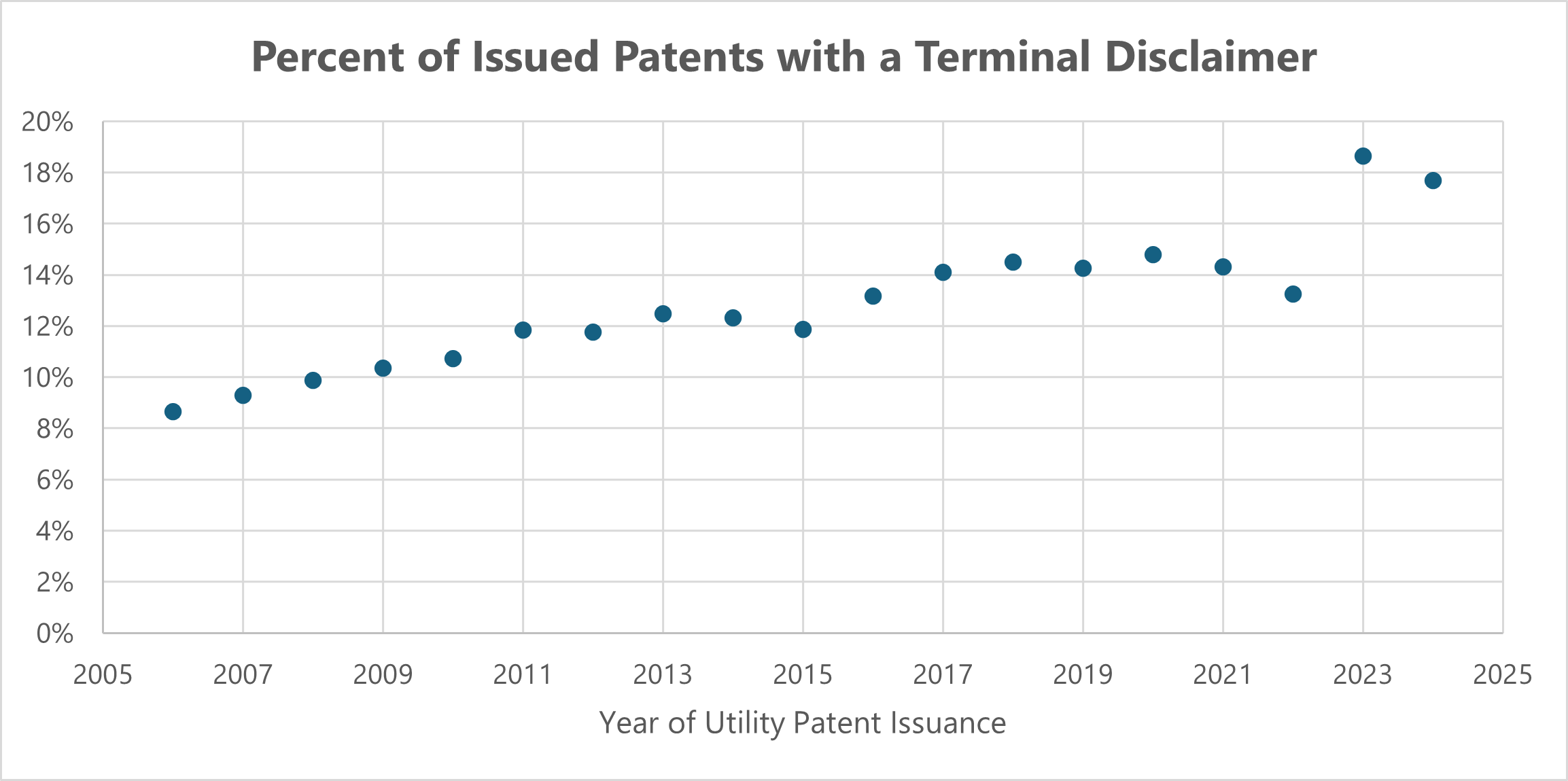In a recent post, I discussed major proposed changes to terminal disclaimer practice that could significantly impact the landscape of patent law. Today, I want to briefly note a trend that underscores why these proposed changes are more pertinent than ever: the increasing percentage of U.S. utility patents bound by a terminal disclaimer.
To continue reading, become a Patently-O member. Already a member? Simply log in to access the full post.
